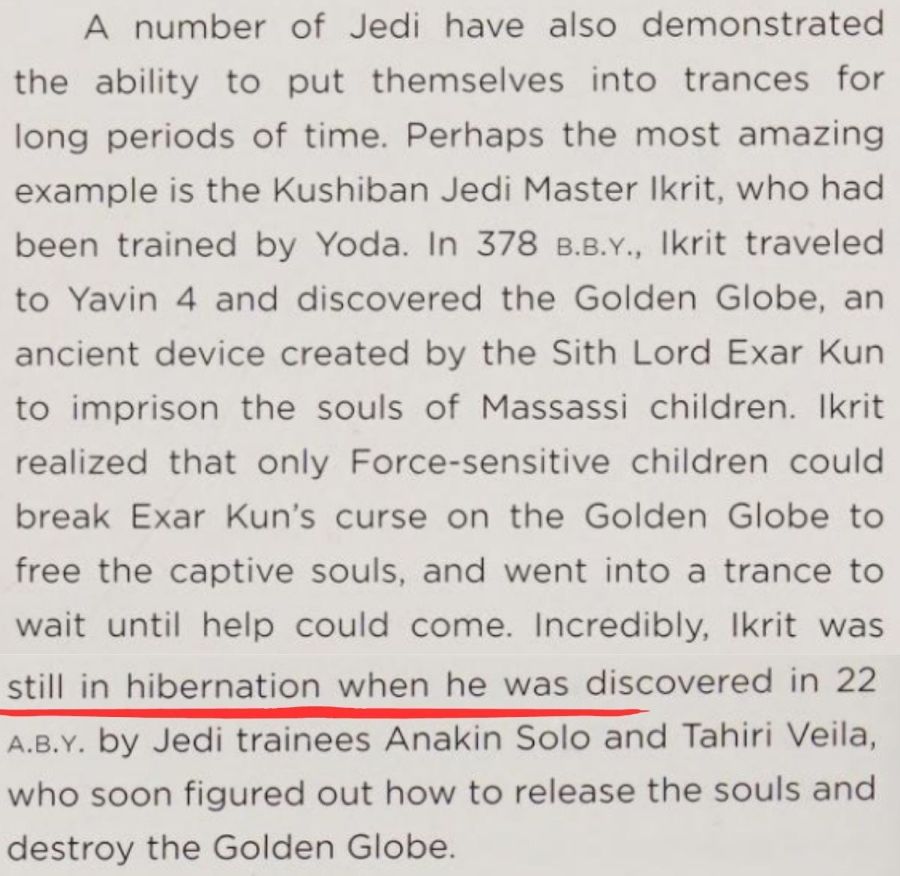Ever catch yourself re-watching Attack of the Clones and thinking, “Hold up—Obi-Wan just spent five days alone in that broom-closet of a Delta-7 and never once cracked the canopy. Where’d he even… y’know… go?” You’re not alone.
The Coruscant-to-Kamino hop clocks in at roughly five standard days in hyperspace, and a Jedi starfighter is basically a seat with engines—no refresher, no galley, no legroom. So, how did the galaxy’s most composed Master handle nature’s least glamorous problem?
Jedi Can Hit the “Hibernate” Button on Their Bodies
One solid answer is that Obi-Wan simply slipped into a full hibernation trance and let the Force handle the biology. The manuals describe the trance as a kind of “life-pause” button: heartbeat and breathing slow to almost nothing, and the body uses only about a tenth of the air a normal person would need. From the outside you’d swear the Jedi is dead—only a faint blip shows up on a life scanner, and another Force-user has to look closely in the Force to know he’s still alive.
And this isn’t just theory buried in old manuals—we’ve actually seen it play out in Star Wars lore. One of the best examples comes from Jedi vs. Sith: The Essential Guide to the Force, which tells the story of the Kushiban Jedi Master Ikrit. Trained by Yoda himself, Ikrit discovered the Golden Globe on Yavin 4 in 378 BBY, a Sith device created by Exar Kun to imprison the souls of Massassi children. Realizing that only Force-sensitive children could ever break the curse, Ikrit did something extraordinary: he placed himself into a deep hibernation trance and waited.
And waited.
Ikrit stayed in that state for nearly four centuries—heartbeat slowed, breath almost gone—until he was awakened in 22 ABY by Jedi trainees Anakin Solo and Tahiri Veila. They freed the trapped souls and destroyed the Golden Globe, finally completing the mission he had put himself on pause for generations earlier.

Because all the big systems idle, the limits are surprisingly generous. A trained Jedi can stay under for roughly a week in a dry cabin—or a month in damp air—before dehydration becomes a real danger. Food isn’t a problem for close to three months. Hook up an IV drip and the clock stretches even farther. Coming out is easy, too: the Jedi sets a little “wake word” that snaps him back to full consciousness.
Now drop those numbers into Obi-Wan’s five-day hyperspace leg to Kamino. He could:
- Skip meals and water entirely. With his digestion on standby, calories and fluids hardly move.
- Produce next to zero waste. Kidneys in low-power mode put out only a few millilitres a day—easily wicked away by the flight suit’s absorption layer.
- Avoid circulation issues. Tiny muscle twitches built into the trance keep blood flowing, so no cramps or clotting after days in the seat.
All he had to do was hand control to the hyper-ring autopilot, fold his arms, and sink into the trance. Five standard days later the nav computer beeped for reversion, Obi-Wan whispered his own wake word, and popped back to full alert with an empty bladder, a clear head, and a spotless cockpit floor—no refresher required.
Mid-Route Waystations Were There If Obi-Wan Really Needed a Pit Stop
The hyperspace lane between Coruscant and Kamino isn’t just empty space; it’s sprinkled with small resupply outposts, think floating truck stops for starships. Any Jedi ferrying a Delta-7 can drop out of hyperspace, latch the hyper-ring to a docking clamp, and step into a pressure-sealed module for fuel, suit servicing, or, yes, a quick refresher trip. Knights on routine patrols do it whenever the schedule isn’t tight.
Obi-Wan had that option the whole way. One message to traffic control, a ten-minute dock, and he could have stretched his legs, refilled life-support canisters, and been back in hyperspace before anyone noticed. The fact he never bothered just shows how confident he was in his flight suit and that hibernation trance—pit stops were there if he needed them, but he simply didn’t.

